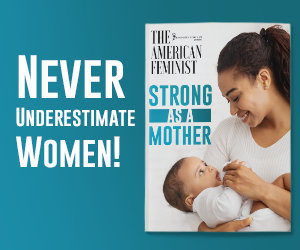Women in the United States are having fewer and fewer children as attitudes about motherhood shift away from recognizing children as a blessing.
The AP reports new data from the Centers for Disease Control shows that, in 2019, the United States saw the fewest number of newborns in 35 years.
Released Wednesday, the report found a 1% drop in births from 2017 as well as declining birth rates in every age group except women over 40. According to the CDC, there were about 3.7 million births in 2019.
Teen birth rates have been dropping steadily since the 1990s. The birth rate among teens fell another 5% in 2019, according to the report.
Meanwhile, premature births increased. A full 10% of babies born in 2019 arrived prematurely (less than 37 weeks gestation), the CDC reports.
Experts told the AP that 2020 could see another decline. Hans-Peter Kohler, who researches fertility at the University of Pennsylvania, said he believes the coronavirus baby bump is “widely perceived as a myth.”
Others agreed, pointing to fears about the pandemic and the economy.
“This unpredictable environment, and anxiety about the future, is going to make women think twice about having children,” Dr. Denise Jamieson, who leads the obstetrics and gynecology department at Emory University, told the news outlet.
SIGN THE PETITION: Stop Infanticide! Stop Abortions Up to Birth!
One Columbia University professor speculated that there could be more babies conceived in 2020 because the coronavirus has made it more difficult to get abortions and birth control. But most abortion facilities have stayed open during the pandemic, and abortion activists are pushing at-home abortions, too.
Tellingly, experts said the biggest factor in shrinking birth rates is “shifting attitudes about motherhood,” according to the report. Women are having fewer children, and they are delaying childbearing until later in life because of their careers and education.
These attitudes seem closely linked to the claims that the abortion industry has been feeding women for decades. Its messaging treats pregnancy and parenthood as a burden, a disease, and a child as just a “choice.” Abortion activists treat women as weak, claiming that they need to abort their own children to be equal to men. They claim parenthood gets in the way of education and career goals, forgetting that children are a blessing worth sacrificing for.
The situation is not entirely discouraging. CDC reports indicate that abortion rates also are dropping steadily throughout the U.S. Although the CDC abortion data is incomplete, it reported 623,471 abortions in 2016, down about 13,000 from 2015.
Last year, the Guttmacher Institute, a pro-abortion research group considered to have the most comprehensive abortion data, reported a 7-percent drop in abortions between 2017 and 2014. It recorded 862,320 abortions in 2017, down from 926,200 in 2014. The abortion rate also fell to 13.5 per 1,000 women of childbearing age, down from 14.6 in 2014 and 16.9 in 2011.
Not since the U.S. Supreme Court allowed abortion on demand in 1973 through Roe v. Wade have abortion numbers been so low.
Guttmacher attributed the decline to lower pregnancy rates and better access to contraception. However, pro-life educational efforts and resources to help unborn babies and mothers also are making a strong impact.








